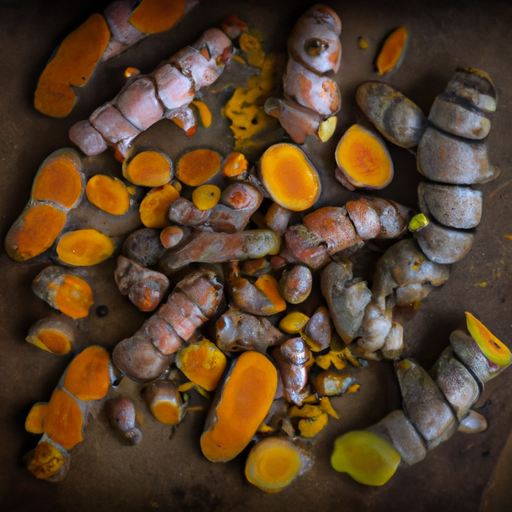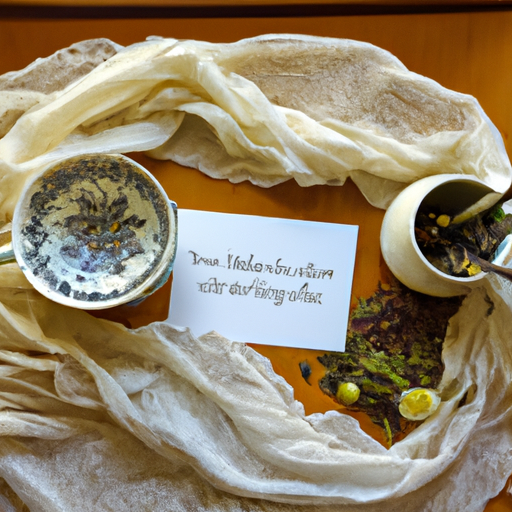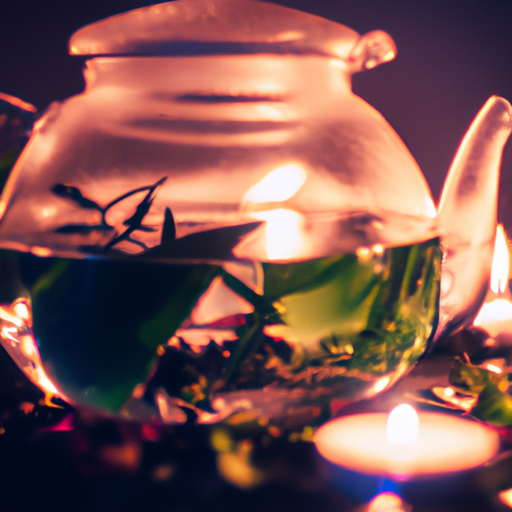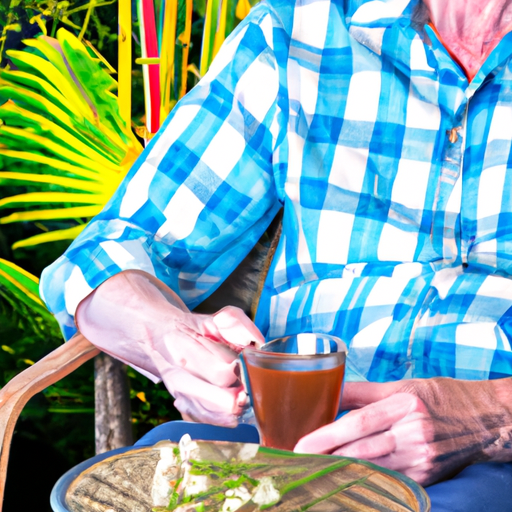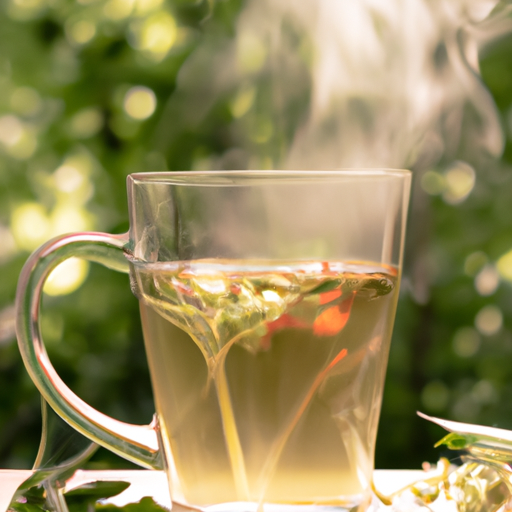Picture a world brimming with a variety of vivid colors, alluring scents, and delicious tastes.
Picture yourself surrounded by shelves upon shelves of herbal teas, each one offering a unique and exquisite experience.
As a tea enthusiast, I have dedicated countless hours to exploring the vast world of herbal teas and discovering the best ones to sell.
In this article, I will share my knowledge and expertise on how to select herbal tea that will not only captivate your customers’ senses but also ensure profitability for your business.
From understanding the different types of herbal teas to considering quality, taste profiles, packaging, and pricing, I will guide you through the intricate process of choosing the perfect teas for your market.
So, let’s embark on this journey together, as we dive into the captivating world of herbal teas and unlock the secrets to selecting the finest brews to sell.
Key Takeaways
- Understand the different types of herbal teas and their distinct flavors and properties.
- Prioritize organic and sustainably sourced teas with certifications like USDA Organic and Fair Trade.
- Conduct thorough market research to determine target audience preferences and purchasing power.
- Build strong relationships with reputable suppliers specializing in herbal teas for consistent provision of high-quality products.
Understand the Different Types of Herbal Teas
To gain a comprehensive understanding of the various types of herbal teas, you should familiarize yourself with their unique characteristics and potential health benefits.
Herbal teas are made by infusing dried leaves, flowers, or roots of various plants in hot water. Each type of herbal tea offers distinct flavors and properties.
For example, chamomile tea is known for its calming effects and can help with sleep and relaxation. Peppermint tea is refreshing and can aid in digestion.
Green tea, although technically not an herbal tea, is popular for its antioxidant properties and potential health benefits.
As you explore the different types of herbal teas, you will discover a wide range of flavors and potential health benefits. Understanding these characteristics will help you select the best herbal teas to sell, ensuring that your customers have a variety of choices to suit their preferences and needs.
Consider Quality and Sourcing
When considering the quality and sourcing of herbal teas to sell, it’s important to look for organic and sustainably sourced options. This ensures that the teas have been grown without the use of harmful chemicals and that the environment has been respected in the production process.
Additionally, checking for certifications and reputable suppliers can provide further assurance of the tea’s quality and authenticity.
By prioritizing these key points, I can offer my customers a selection of high-quality herbal teas that they can enjoy with confidence.
Look for organic and sustainably sourced teas
First things first, make sure you’re on the right track by opting for organic and sustainably sourced teas – after all, as the saying goes, ‘you are what you drink!’
When selecting herbal teas to sell, it’s crucial to prioritize organic and sustainably sourced options. Here are three reasons why:
-
Health Benefits: Organic teas are free from synthetic pesticides, herbicides, and chemicals, ensuring a purer and healthier beverage. Sustainably sourced teas support responsible farming practices that protect the environment and promote biodiversity.
-
Flavor and Aroma: Organic and sustainably sourced teas often offer a superior taste and aroma compared to conventionally grown teas. The careful cultivation and harvesting methods used preserve the delicate flavors and natural characteristics of the herbs.
-
Ethical Considerations: By choosing organic and sustainably sourced teas, you support fair trade practices and contribute to the well-being of farmers and their communities.
To continue on the path of selecting the best herbal teas to sell, the next step is to check for certifications and reputable suppliers.
Check for certifications and reputable suppliers
Make sure you’re on the right track by looking for certifications and reputable suppliers when choosing your favorite organic and sustainably sourced teas. Certifications such as USDA Organic and Fair Trade ensure that the teas have been produced using environmentally friendly practices and that the workers involved have been treated fairly. Reputable suppliers are essential to guarantee the quality and authenticity of the teas. They should have a transparent sourcing process and be able to provide information about the origin of the teas. To help you understand the importance of certifications and reputable suppliers, take a look at the table below:
| Certification | Description | Benefits |
|---|---|---|
| USDA Organic | Ensures the tea is free from synthetic chemicals and pesticides | Promotes environmental sustainability and supports healthy farming practices |
| Fair Trade | Guarantees fair wages and better working conditions for tea workers | Enhances social justice and supports communities in tea-producing regions |
| Rainforest Alliance | Protects ecosystems, wildlife, and workers’ rights | Encourages sustainable farming practices and preserves biodiversity |
By choosing teas with these certifications and sourcing from reputable suppliers, you can ensure that your herbal tea selection is not only delicious but also ethically and sustainably produced. Now, let’s explore the fascinating world of taste and flavor profiles.
Taste and Flavor Profiles
Indulge your senses with the aromatic and rich taste of our carefully selected herbal teas. When selecting herbal teas to sell, taste and flavor profiles play a crucial role.
Each herbal tea has its unique taste profile, which can range from soothing and floral to bold and invigorating. The taste and flavor profiles are determined by the specific herbs and botanicals used in the blend, as well as the brewing method.
For example, chamomile tea offers a delicate and calming flavor, while peppermint tea provides a refreshing and minty taste. By offering a wide variety of taste profiles, we ensure that our customers can find their perfect cup of herbal tea.
In the next section about packaging and presentation, we’ll explore how to create an enticing visual appeal for our herbal tea products.
Packaging and Presentation
When it comes to selecting herbal teas to sell, taste and flavor profiles are undoubtedly important. But it’s not just about what’s inside the tea, it’s also about how it’s presented to potential customers. Packaging and presentation can make a significant impact on the overall appeal of the product.
To ensure that your herbal tea stands out from the competition, consider these key elements in your packaging and presentation:
-
Eye-catching design: Create a visually appealing package that catches the attention of customers.
-
Informative labels: Include detailed information about the tea, such as ingredients, brewing instructions, and any health benefits.
-
Sustainable materials: Opt for eco-friendly packaging that aligns with the values of health-conscious consumers.
-
Convenient packaging: Make it easy for customers to enjoy your tea on the go with individual sachets or tea bags.
-
Gift-worthy options: Offer beautifully packaged gift sets, perfect for special occasions or as presents.
Now that we’ve covered packaging and presentation, let’s move on to the next step: price and profitability.
Price and Profitability
You can ensure that your herbal tea business is profitable by carefully considering the pricing strategy, balancing affordability with quality, like a tightrope walker maintaining balance on a thin wire.
It is important to set a price that covers your production costs while remaining competitive in the market. Conducting thorough market research will help you understand the price range that customers are willing to pay for herbal teas. Additionally, consider the value your product offers and the unique selling points that differentiate it from competitors.
By offering competitive prices and maintaining a reasonable profit margin, you can attract customers while still ensuring profitability. Understanding your target audience’s preferences and purchasing power is crucial in determining the right price point for your herbal tea. Market research will provide valuable insights into their needs and preferences, allowing you to tailor your pricing strategy accordingly.
Market Research and Target Audience
Conducting thorough market research will provide valuable insights into the preferences and purchasing power of your target audience, helping you tailor your pricing strategy accordingly. By understanding your target audience’s preferences, you can select herbal teas that align with their tastes and preferences. Additionally, market research will reveal information about your target audience’s purchasing power, allowing you to determine the price range that will attract customers while also ensuring profitability for your business.
To conduct market research, you can use various methods such as surveys, focus groups, and online research. These methods will help you gather information about your target audience’s preferences, including the types of herbal teas they prefer, their flavor preferences, and any specific health benefits they are seeking. Furthermore, understanding your target audience’s demographics, such as age, gender, and location, will allow you to tailor your product selection and marketing efforts accordingly.
Incorporating a table to display the gathered data can be a helpful way to present the information clearly. You can use a two-column and four-row table to showcase the different herbal tea preferences and the corresponding purchasing power of your target audience. This visual representation will make it easier for you to analyze the data and make informed decisions about the herbal teas you choose to sell.
By conducting thorough market research and understanding your target audience’s preferences and purchasing power, you can strategically select herbal teas to sell that will appeal to your customers. This will enable you to build relationships with suppliers who can provide you with the specific herbal teas you need to meet the demands of your target audience.
Build Relationships with Suppliers
After conducting thorough market research and identifying my target audience, it’s essential to build strong relationships with suppliers in order to select the best herbal teas to sell.
As a first step, I’ll reach out to reputable suppliers who specialize in herbal teas and have a wide variety of options available. By establishing a personal connection with these suppliers, I can gain valuable insights about the origin, quality, and flavor profiles of their teas. This will enable me to make informed decisions about the products I choose to stock.
Additionally, building relationships with suppliers allows for open communication and the opportunity to negotiate favorable pricing and terms. Regularly engaging with suppliers also keeps me updated on any new herbal tea trends or unique offerings that may appeal to my target audience.
Strong supplier relationships are vital in ensuring that I can consistently provide high-quality herbal teas to my customers.
Frequently Asked Questions
How can I determine the shelf life of different types of herbal teas?
Determining the shelf life of herbal teas varies based on factors like packaging, storage conditions, and ingredients. Check for expiration dates, analyze preservation methods, and consider the tea’s quality and aroma to ensure freshness and taste for your customers.
What are some common additives or preservatives used in herbal teas?
Common additives or preservatives used in herbal teas include natural flavors, dried fruits, flowers, and herbs. These ingredients enhance the taste and aroma of the tea while also preserving its freshness. It is important to choose high-quality additives for a superior tea selection.
Are there any specific certifications or quality standards to look for when sourcing herbal teas?
When sourcing herbal teas, it is important to look for specific certifications and quality standards. Some examples include USDA Organic, Fair Trade, and Non-GMO Project Verified. These certifications ensure that the teas meet certain criteria for purity, sustainability, and ethical sourcing.
Can you provide tips on how to create attractive and informative labels for herbal tea packaging?
To create attractive and informative labels for herbal tea packaging, focus on clear and eye-catching designs. Include key details such as tea blend, ingredients, brewing instructions, and any unique selling points. Utilize high-quality materials and consider professional graphic design assistance if needed.
How can I effectively market and promote my herbal tea products to reach my target audience?
To effectively market and promote my herbal tea products, I focus on understanding my target audience’s needs and preferences. By crafting compelling messaging, utilizing social media platforms, and collaborating with influencers, I create a buzz that resonates with tea enthusiasts.
Conclusion
After diving deep into the world of herbal teas, I’ve learned that selecting the perfect blend to sell requires a careful balance of taste, quality, and market research. Just like a skilled gardener tending to their plants, you must carefully consider the different types of herbal teas available and their unique flavor profiles.
With packaging that catches the eye and a price that ensures profitability, success is within reach. By building strong relationships with suppliers, you can create a flourishing business that blooms like a beautiful, aromatic tea garden.


